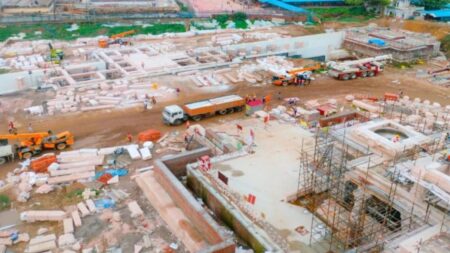The second Assam flood of the year created havoc, as Cachar is the worst-hit district with nearly 6.32 lakh people suffering, followed by the middle Assam districts of Nagaon and Morigaon, with 2.33 lakh and 1.65 lakh people suffering, respectively.

On Tuesday, Assam saw a slight improvement in the flood situation, although four people, including children, lost their lives, and nearly 11.17 lakh people are still affected in 16 districts. According to the Assam State Disaster Management Authority (ASDMA), two people, including one child, fell in the Assam flood water in the Cachar district and died, while one person drowned in the Morigaon district and another one died in the Nagaon district due to floods. With this, the death rate in this year’s flood stands at 184 in the state.
According to the data present in ASDMA, it is reported that more than 11,16,800 people are still suffering due to floods in the districts of Bajali, Barpeta, Biswananth, Cachar, Chirang, Darrang, Dibrugarh, Goalpara, Hailakandi, Kamrup, Kamrup Metropolitan, Karimganj, Morigaon, Nagaon, Sivasagar, and Tamulpur districts. The floods led to the deaths of 3,18,910 domestic animals and many poultry across the state. The ASDA said the mighty Brahmaputra and its tributaries, Kapili, Disang, and Dhansari, are still flowing above the danger level.
Due to the havoc created by the flood across the districts of Nagaon and Morigaon, people are staying on the embankments and highways. There are nearly 700 relief camps across both districts. Nagaon and Morigaon districts are the most affected in the Brahmaputra valley.
There are a total of 365 relief camps in the state where 2.78 lakh people are logged and a total of 47198.87 hectares of the crop have been damaged. Roads, houses, bridges, and many other infrastructures have been affected across various places in the state. Massive erosion also occurred in various places.
Why is Assam prone to floods?
Assam is one of the most flood-affected states in the country and it has become an annual calamity. The events which impacted human lives most in the state were the floods of 1988, 1998, and 2004. The 2004 flood was the worst, which impacted 12.4 million people and claimed 251 lives.
According to the Assam government, 40% of the area of the state is flood-prone, and overall, Assam accounts for almost 10% of the total flood-prone area of the country. A vast network of rivers flows through Assam, including the mighty Brahmaputra and Barak rivers, and more than 50 tributaries of both. The rivers of Assam also receive water from Bhutan and neighboring states like Arunachal Pradesh and Meghalaya, which is the reason the rivers get filled with water easily. Bank erosion, caused by the mighty Brahmaputra, is one of the main reasons why Assam gets flooded every year. Bank erosion means the removal of sediment, rock fragments, and soil along the river banks, which happens when there is a high flow of water.
Erosion leads to a rise in the width of the river and it leads to a change in the flow of the river. According to the government of Assam, more than 4.29 lakh hectares of land, which is 7.40% of the area of the state, has been eroded by the Brahmaputra and its tributaries since 1950. In some places, the width of the river Brahmaputra has increased by up to 15 kilometers due to bank erosion, which is making it the widest river in India. It is estimated that nearly 8000 hectares of land get destroyed due to erosion in Assam.
Measures by the government to control floods:
In 1982, the Brahmaputra Board suggested building dams and reservoirs to control floods in Assam, but building dams was also hazardous as breaking down dams created havoc.
To control Assam flood situation, the water resources department of Assam has built many embankments and flood walls across the state. The government also considered digging up the riverbed, which would make the river deeper, but many experts have warned the government against it as the Brahmaputra sediment yield is among the highest in the world. There are various other reasons why Assam gets flooded every year. It is the responsibility of both the government and the public to find measures to control floods in Assam.













